

This webpage won't be updated anylonger.
Please visit: www.gerhardsengerner.com
Jim Lambie – Rowche Rumble (2008)
Jim Lambie
Rowche Rumble
Exhibition
period. 21 June – September, 2008
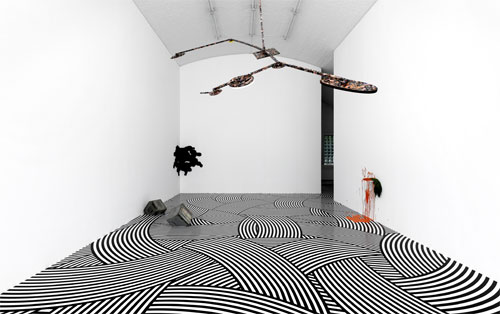
Installation view, c/o – Atle Gerhardsen
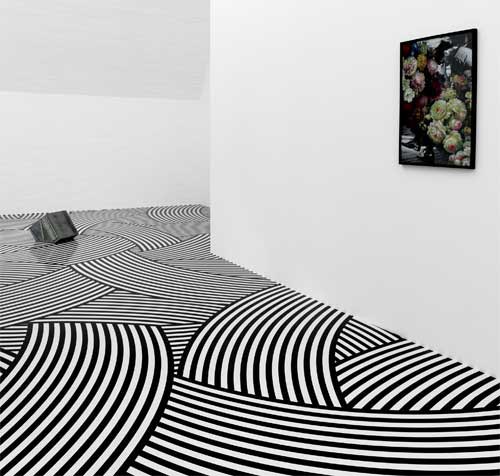
Installation view, c/o – Atle Gerhardsen
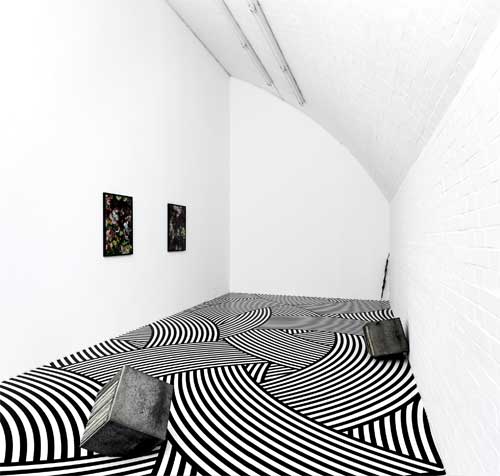
Installation view, c/o – Atle Gerhardsen
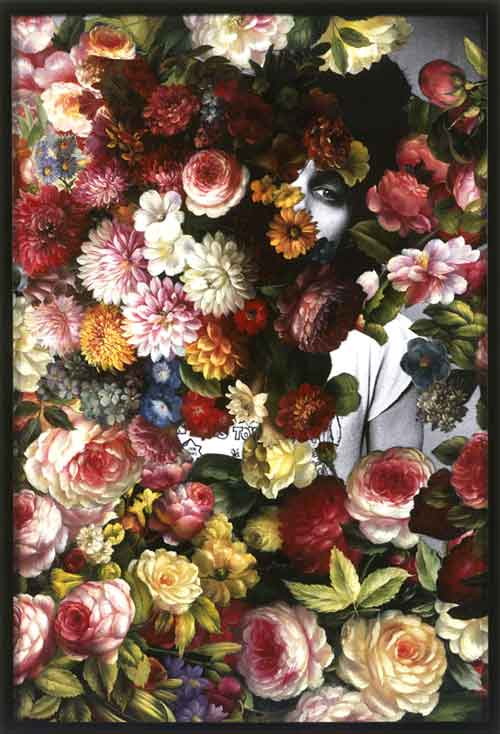
The Bad Seeds (Nick Cave), 2008
Poster, oil on canvas collage, 81,2 x 55,4 cm
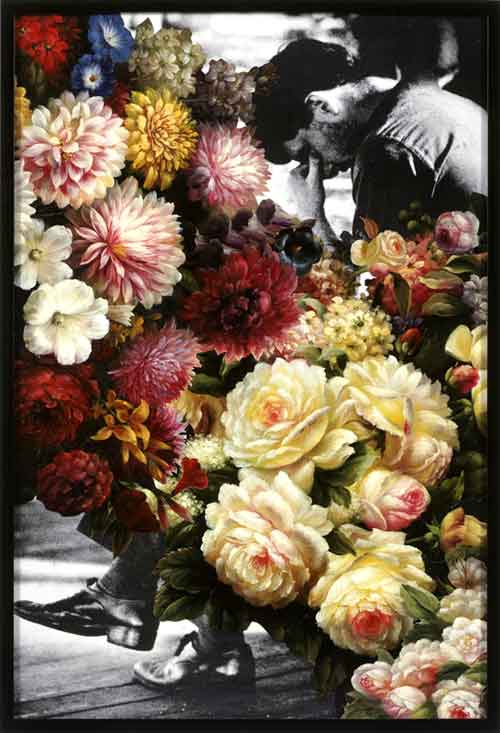
Atmosphere (Ian Curtis), 2008
Poster, oil on canvas collage, 80,3 x 55,2 cm
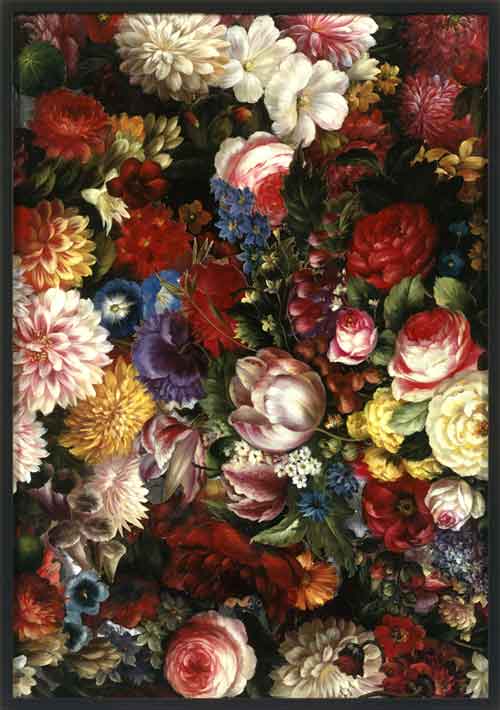
Rowche Rumble (Mark E.Smith), 2008
Poster, oil on canvas collage, 80,4 x 56,4 cm
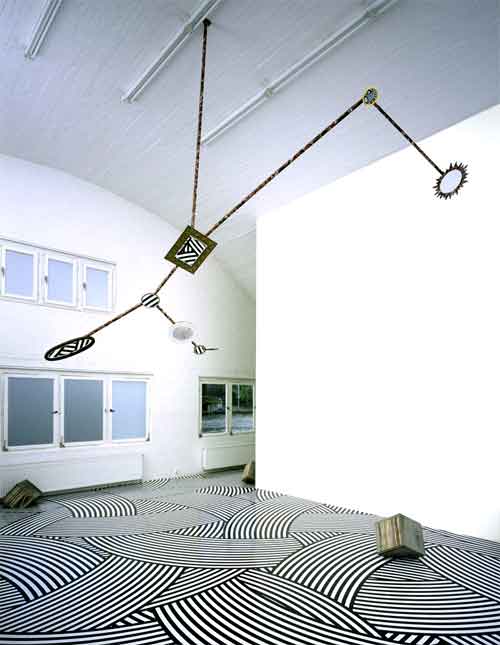
Canis Majoris (Carbon Twelve Remix), 2008
Aluminium, photographic transfer, mirrors, approx. 320 x 465 x 158 cm hanging
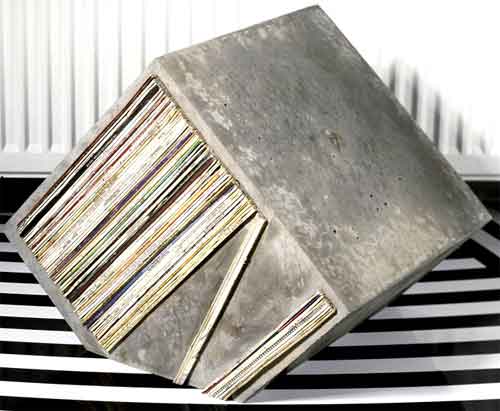
Sonic Reducer 14, 2008
Concrete, record sleeves, 39 x 50 x 36,5 cm
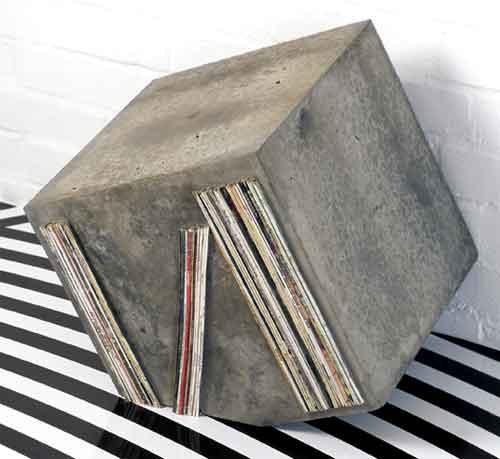
Sonic Reducer 15, 2008
Concrete, record sleeves, 44,5 x 53 x 42cm
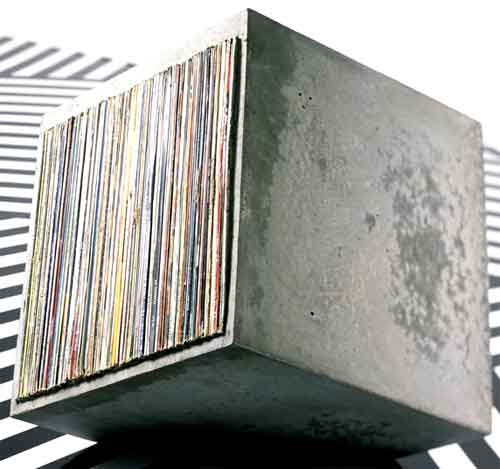
Sonic Reducer 16, 2008
Concrete, record sleeves, 49 x 50 x 53 cm
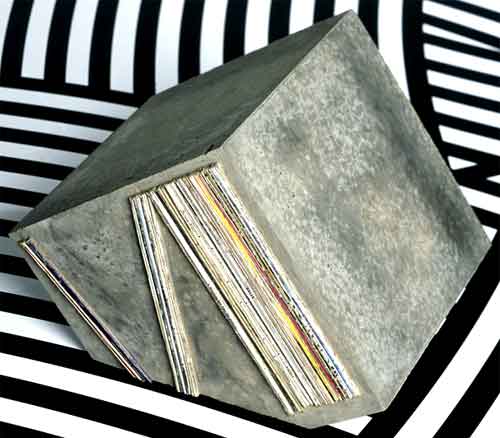
Sonic Reducer 17, 2008
Concrete, record sleeves, 36 x 49 x 36,5 cm
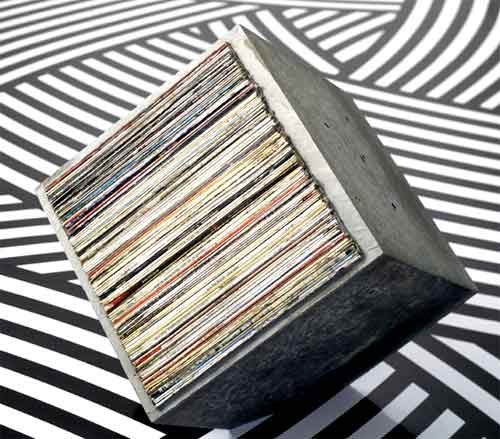
Sonic Reducer 18, 2008
Concrete, record sleeves, 52,5 x 52 x 54 cm
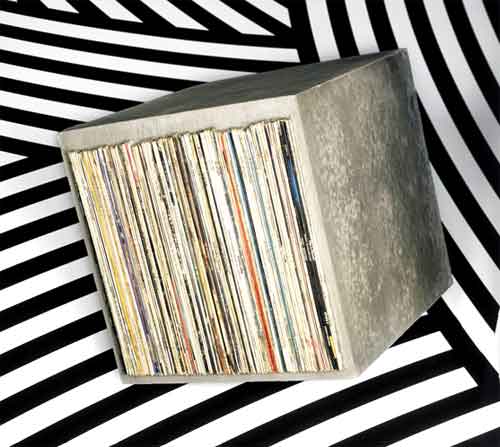
Sonic Reducer 19, 2008
Concrete, record sleeves, 49 x 58 x 59 cm
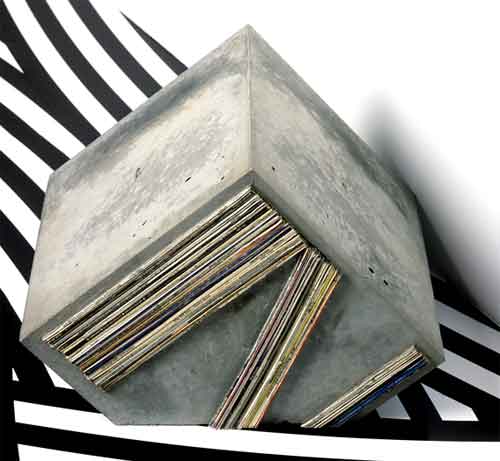
Sonic Reducer 20, 2008
Concrete, record sleeves, 36,5 x 50 x 36,5 cm
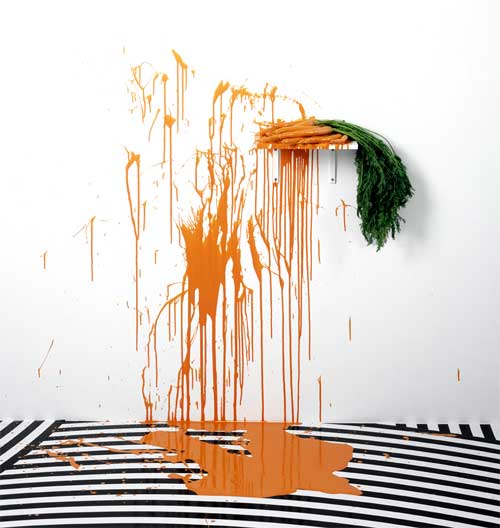
14 Carrots, 2008
Carrots, gloss paint, shelf, Variable dimensions
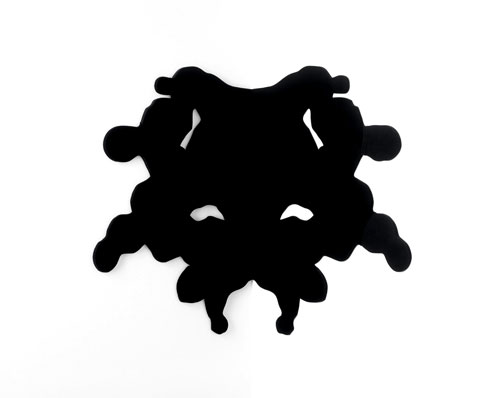
Sympathetic Anesthetic, 2008
T-Shirts, MDF, 123 x (2 x 94) x 2 cm

Psychedelic Soul Stick 70, 2008
Cotton thread, bamboo, wire, bead necklace, Marlboro Light packet, handbag
strap,
102 x 9 x 7 cm
Jim Lambie
Rowche Rumble
Exhibition period. 21 June - September, 2008
We are greatly pleased to announce the first exhibition of Jim Lambie at c/o
- Atle Gerhardsen. In his first solo show in Berlin, the artist will transform
the gallery into an installation tailor-made for the architecture of the space.
Jim Lambie created his first Zobop floor installations with multicolored strips
of vinyl tape: in these works, the geometrical contours of the pool of color
expand into the room, vibrating as the pulsations seem to move the viewer.
Lambie's art breathes the atmosphere of trendy, glamorous clubs, preferably
places where music is made at the pace of life. The Zobop installations evoke
70’s glam rock in the exhibition space, visualizing the throbbing music
and psychedelic dance floors, where in the heat of the moment everything seems
possible.
"My materials and installations often infer the kind of performance you
get in a nightclub, I guess, there could be an energy rush which one gets
from entering a disco. Or in the case of the floors, what I enjoy is how the
floor can activate other objects in the way a dance floor does people (Jim
Lambie in an interview with Sinisa Mitrovic).“
Jim Lambie will pave the floor of the gallery in black-and-white vinyl. In
contrast to the brightly colored geometric forms in other architecturally
geared installations, here he makes use of a kind of wave motif, reflecting
the water of the Spree river flowing by the gallery. Lambie calls this pattern
"The Strokes", after the New York rock band, with a double reference
to brushstrokes in painting. The unity is interrupted by seven cubes of concrete,
rising up out of the sea of waves.
The "Soulstick" casually leaning against a wall -a bamboo stick
wrapped in string and cloth, with interwoven fetishes- appears to mark both
the beginning and end of the entangled stripes, as it conveys its magic energy
into the vinyl floor. It seems to be a relict of a mythical ritual, in which
rhythmic music is always the key. Collages with posters and flowers complete
the installation.
The artist will also use the height of the exhibition space for a hanging
"constellation" sculpture, re-enacting astrological zodiac signs
with aluminum and mirror components. Each mirror takes the place of a star
in a constellation, and not only reflects the psychedelic pattern on the floor,
but also the spectator. With his work "Silver Clouds" in the Leo
Castelli gallery in 1966, Andy Warhol released silver balloons filled with
helium, which floated weightlessly throughout the room, showing a warped reflection
of the visitors. Jim Lambie employs mirrors in much of his work, returning
the reflection of the viewer and the surrounding objects, hereby triggering
a self-reflexive process.
With his comprehensive installations the artist unconditionally adopts the
exhibition space at hand, and the works settle into their environment with
nearly anarchic occupying force. In this way Lambie's art shapes an extraordinary
spectator-awareness of the place in which they are situated.
Jim Lambie was born in 1964 in Glasgow, where he still lives and works. Numerous
international solo exhibitions have been dedicated to the work of the artist,
and in 2005 he was nominated for the Turner Prize. From 6 March to 24 October
his work can not only be seen in the group exhibition "Thyssen-Bornemisza
Art Contemporary - Collection as Aleph" in the Graz Art Museum, but simultaneously
also from 11 April to 29 September in the solo exhibition "Forever Changes"
in the Glasgow Museum of Modern Art and in the group exhibition "Sympathy
for the Devil: Art and Rock and Roll since 1967" from 31 May to 8 September
in the Museum of Contemporary Art North Miami.
On 1 August, the ACCA in Melbourne will be opening a solo exhibition with
Jim Lambie (running until 21 September 2008) and in November, the Hara Museum
of Contemporary Art in Tokyo will be showing some of the artist's work.
-----------------------
Jim Lambie
Rowche Rumble
Eröffnung: 21. Juni 2008, 18 – 21 Uhr
Ausstellungsdauer: 21. Juni – September 2008
Wir sind sehr erfreut, die erste Ausstellung von Jim Lambie mit c/o –
Atle Gerhardsen ankündigen zu können. Der Künstler wird in
seiner ersten Einzelausstellung in Berlin die Galerie in eine, an der vorgefundenen
Architektur orientierte Gesamtinstallation verwandeln.
Jim Lambie schuf Ende der 1990er seine ersten Zobop Bodeninstallationen mit
vielfarbigen Vinyltapes: die in geometrischen Linien verlaufende Farbmasse
greift vibrierend in den Raum ein, die Schwingungen scheinen sich pulsierend
auf die Betrachter zu übertragen. Lambies Kunst atmet die Atmosphäre
von trendigen, glitzernden Clubs, den Orten, wo Musik im besten Fall direkt
am Puls der Zeit entsteht. Die Zobop-Installationen rufen den 70er Glam Rock
in die Ausstellungsräume, sie visualisieren das Pulsieren der Musik und
sind zugleich psychedelische Dancefloors, wo im Rausch der Musik alles möglich
zu sein scheint.
„My materials and installations often infer the kind of performance
you get in a nightclub, I guess, there could be an energy rush which one gets
from entering a disco. Or in the case of the floors, what I enjoy is how the
floor can activate other objects in the way a dance floor does people (Jim
Lambie in einem Interview mit Sinisa Mitrovic).”
Jim Lambie füllt den Galerieboden unserer Räume mit schwarz-weißem
Vinyl. Im Gegensatz zu den vielfarbigen, geometrisch den Formen der Architektur
folgenden Installationen, greift er eine Art Wellenmuster auf, welches das
Wasser der vorbeifließenden Spree in die Galerie übersetzt. Lambie
selbst nennt dieses Muster „The Strokes“, Referenz zur New Yorker
Rockband sowie dem malerischen Pinselduktus. Die Einheit unterbrechen sieben
Betonkuben, die aus dem Wellenmeer herausragen.
Der nonchalant an einer Wand lehnende „Soulstick“ - ein mit farbigen
Fäden und Tuch umwickelter Bambusstab mit eingewobenen Fetischen - scheint
sowie Anfang und Ende des Streifengewirrs darzustellen und leitet seine magische
Energie in den Vinylboden weiter. Er wirkt wie das Relikt eines mythischen
Rituals, zu dem auch rhythmische Musik immer der Schlüssel ist. Poster-
und Blumencollagen vervollständigen die Rauminstallation.
Der Künstler wird zudem die Höhe des Ausstellungsraumes für
eine hängende „Constellation“-Skulptur nutzen, welche mit
Aluminium- und Spiegelelementen astronomische Sternbilder nachstellt. Jeder
Spiegel nimmt den Platz eines Sterns im Sternbild ein, und er reflektiert
nicht nur die psychedelischen Muster des Fußbodens, sondern auch den
Besucher selbst.
Andy Warhol hat mit seiner Arbeit „Silver Clouds“ 1966 in der
Galerie Leo Castelli im Ausstellungsraum silberne, heliumgefüllte Luftballons
fliegen lassen, die schwerelos durch den Raum trieben und in denen sich die
Besucher verzerrt widerspiegelten. Jim Lambie greift den Spiegel in vielen
seiner Arbeiten auf, er wirft das Spiegelbild des Betrachters und der ihn
umgebenden Dinge zurück und kann so einen selbstreflexiven Prozess in
Gang setzen.
Der Künstler eignet sich mit seinen umfassenden Installationen den jeweiligen
Ausstellungsraum bedingungslos an, und die Werke greifen mit nahezu anarchischer
Besetzerkraft in ihre Umgebung ein. Lambies Kunst entwirft auf diese Weise
auch ein besonderes Bewußtsein der Besucher für den Raum, in dem
sie sich befinden.
Jim Lambie wurde 1964 in Glasgow geboren, wo er auch heute lebt und arbeitet.
Zahlreiche internationale Einzelausstellungen widmeten sich den Werken des
Künstlers, und 2005 wurde er für den Turner Price nominiert. Vom
6. März bis zum 26. Oktober sind seine Arbeiten nicht nur in der Gruppenausstellung
„Thyssen-Bornemisza Art Contemporary - Collection as Aleph“ im
Kunsthaus Graz zu sehen, sondern auch gleichzeitig vom 11. April bis 29. September
in der Einzelausstellung „Forever Changes“ im Glasgow Museum of
Modern Art sowie in der Gruppenausstellung „ Sympathy for the Devil:
Art and Rock and Roll since 1967“ vom 31. Mai bis zum 8. September im
Museum of Contemporary Art North Miami.
Am 1. August eröffnet das ACCA in Melbourne eine Einzelausstellung mit
Jim Lambie (bis 21. September 2008) und im November wird das Hara Museum of
Contemporary Art in Tokyo Arbeiten des Künstlers zeigen.